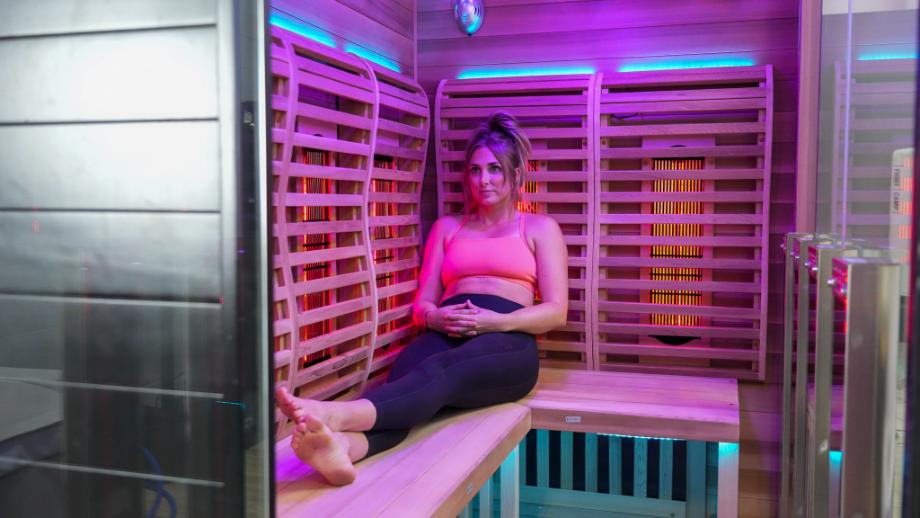We test and review fitness products based on an independent, multi-point methodology. If you use our links to purchase something, we may earn a commission. Read our disclosures.
As the anti-aging and recovery market continues to grow, we’re seeing countless tools, supplements, and biohacking products designed to optimize our health, improve exercise recovery, reduce symptoms of aging, and more.
With many of these products making dramatic claims that sound too good to be true, it can be hard to tell what’s worth trying. Many anti-aging hacks aren’t cheap, and nobody wants to waste their money on something that doesn’t work. So, does red light therapy work?
In this article, I’ll examine the current science of red light therapy, which is used to treat a variety of health conditions. I’ll explain how this treatment works, share the science-backed benefits and health risks, and answer the question once and for all.
Let’s find out.
What Is Red Light Therapy?
Before we dig into the science, we need to briefly cover what red light therapy (RLT) is. RLT is a medical treatment classified as low-level laser therapy that uses red and near-infrared light to promote healing and energy production in your body’s cells.
While most people know it as red light therapy, it also goes by several other names that you may see, including:
- Photobiomodulation (PBM)
- Photonic stimulation
- Biostimulation
- Low-level laser therapy (LLLT)
- Low-power laser therapy (LPLT)
I’ll be using the term red light therapy in this article, but some of the research looks at all sorts of LED light therapy, and many devices can be programmed to use a wide spectrum of colors and wavelengths, including ultraviolet and blue light therapy.
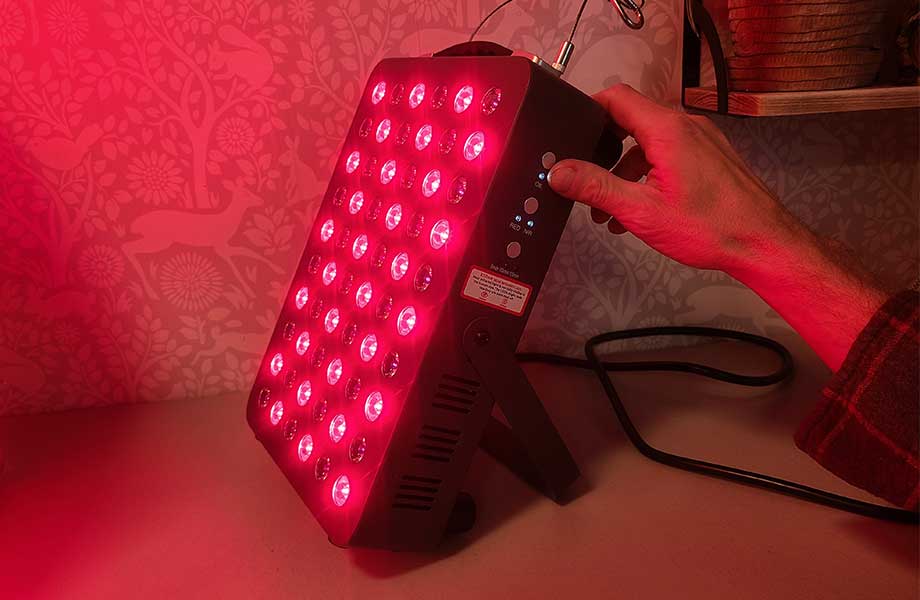
RLT may seem like a cutting-edge treatment developed by modern science, but it’s been studied since the 1990s, when NASA began experimenting1 with different colors of light to increase plant growth in space.
This non-invasive treatment is a popular service offered at dermatologist clinics, spas, weight loss centers, and doctor’s offices. It can even be used at home, as many FDA-approved red light therapy devices can be purchased to keep in your house.
RELATED: What Is Red Light Therapy?
How Does Red Light Therapy Work?
When the light generated by an RLT device hits your skin, specific wavelengths of red light penetrate the skin and are absorbed by special molecules in your skin cells known as chromophores. This is meant to promote activity in the mitochondria, which are the powerhouses of the cells in your body that create energy.
This light exposure can increase adenosine triphosphate (ATP) production in the mitochondria, which fuels many types of exercise.
In addition to boosting ATP production in mitochondria, RLT can improve blood flow, reduce inflammation, and even reduce oxidative stress, a process that plays a major role in aging skin2.
If these benefits are real, RLT would be a powerful tool for recovery and anti-aging, but as always, we should examine scientific research rather than rely on marketing claims.
RELATED: Best Red Light Therapy
Scientific Benefits of Red Light Therapy
Now that we’ve established how red light therapy works, let’s look at some of the evidence-based benefits of regular light therapy. It’s not magic, but there are a few reasons you may wish to add RLT to your health and wellness routine.
RELATED: Infrared Sauna Benefits
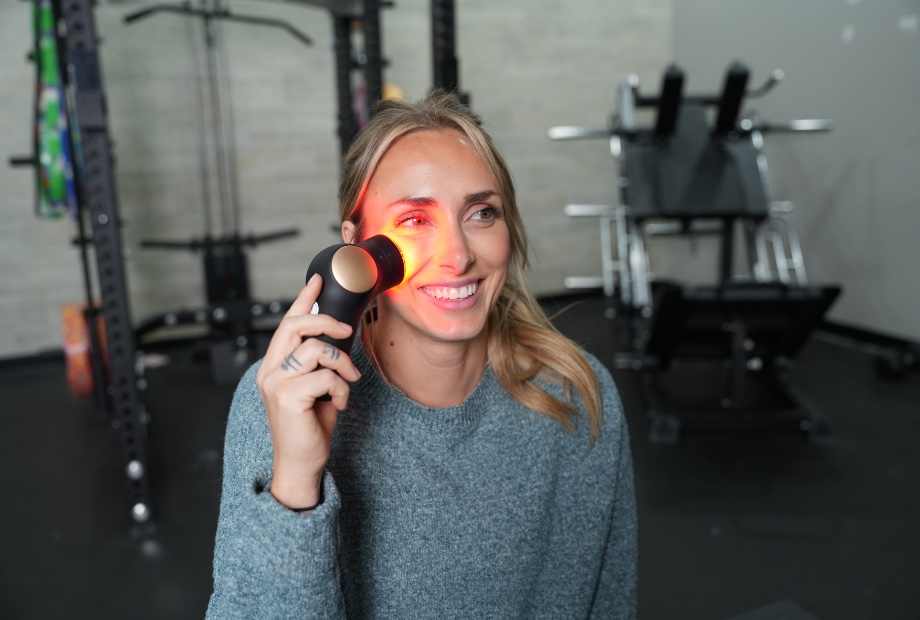
May Reduce Inflammation
Inflammation in the human body is a natural response associated with healing, but having chronically high levels of inflammation can backfire, causing achy joints and muscular pain between workouts. More importantly, chronic inflammation has been associated3 with an increased risk of cardiovascular disease, arthritis, diabetes, allergies, and chronic obstructive pulmonary disorder.
A 2017 study4 examined the anti-inflammatory effects of RLT and found that it may reduce inflammation, specifically in the brain, abdominal fat, wounds, lungs, and spinal cord.
May Accelerate Wound Healing
Another benefit of RLT is its ability to help improve cutaneous, or dermal, wound healing, which is any sort of injury that pierces the skin.
In 2017, researchers looked at the impact of red and near-infrared wavelength therapy5 on cutaneous wound healing, and found that specific frequencies have beneficial healing effects on the skin.
Specifically, the authors of the study concluded that “Near-infrared (800-830 nm) was found to be the most effective and widely studied wavelength range followed by red (630-680 nm) and 904 nm super pulsed light.”
May Promote Healthy Skin and Hair
Red light therapy is commonly used in-office at dermatology clinics and anti-aging centers as a skin rejuvenation treatment, and science supports the idea of adding RLT to your skin care routine.
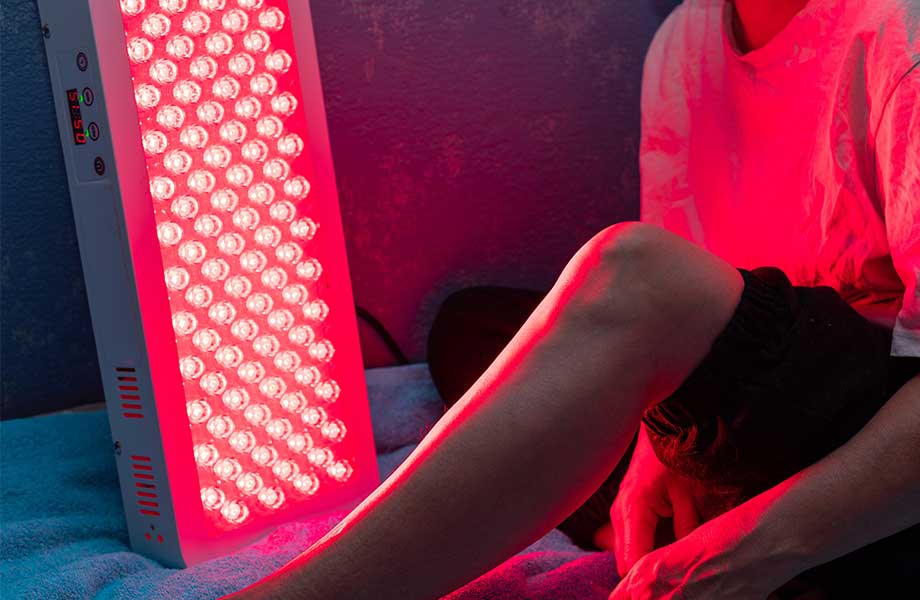
A 2020 study6 published in the Journal of Drugs in Dermatology found that RLT can help rejuvenate the skin by stimulating fibroblasts, which increases collagen production. This increase in collagen helps improve skin elasticity and minimize the appearance of fine lines and wrinkles, two classic signs of aging.
Red light therapy may also treat certain skin conditions unrelated to aging. A 2018 study7 from Lasers in Medical Science found that phototherapy cleared plaque psoriasis with two weekly laser sessions in one month.
A 2021 study8 also found that RLT can help treat both acne and alopecia, a condition that causes hair loss. The correct light frequencies can promote hair growth with regular use.
Finally—and this is not medical advice in any way—a 2022 study14 published in Frontiers in Oncology found that RLT slowed the progression of skin cancer.
RELATED: Best Infrared Saunas
May Reduce Joint and Muscle Pain
Red light therapy may not seem strong enough to have any impact on muscle and joint soreness, but similar to the best muscle recovery tools, RLT can help with post-workout recovery.
A 2022 study9 published in the European Journal of Physical Rehabilitation Medicine found that RLT “reduces pain intensity in non-specific knee pain, osteoarthritis, pain post-total hip arthroplasty, fibromyalgia, temporomandibular diseases, neck pain, and low back pain.”
Even if you don’t suffer from joint pain, RLT can help with the post-workout soreness many of us experience in the days after a resistance training session. A 2016 systematic review10 looked at 46 clinical trials on the impact of RLT, and found that it can heal damaged muscle tissue, and even increase muscle mass gained after training while decreasing inflammation and oxidative stress.
Is Red Light Therapy Dangerous?
When we think about intentionally exposing our skin to concentrated light, many of us may think about tanning beds or even regular sun exposure, which can damage our skin and eyes.
Does red light therapy have the same impact? The answer is tricky.
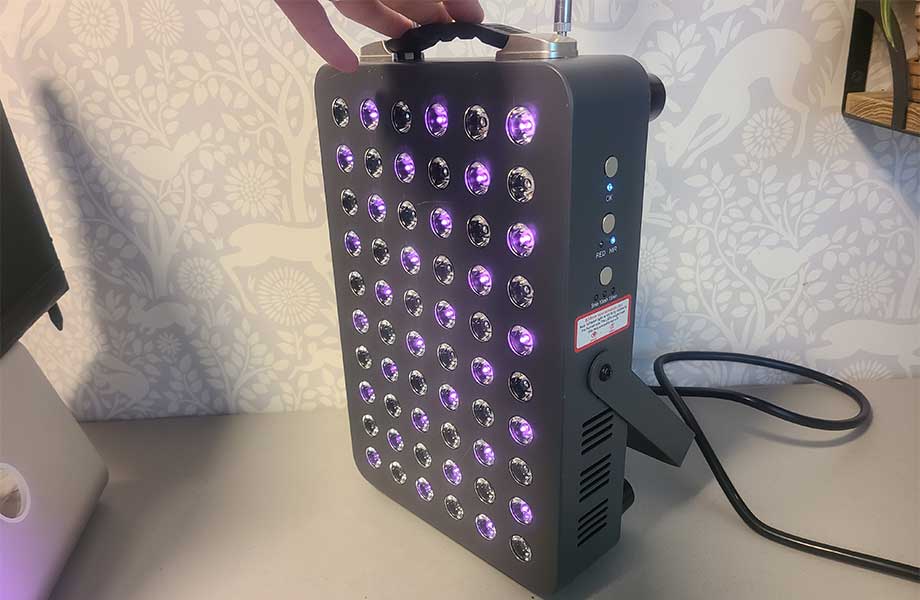
We’ll start with the eyes, as one 2017 study11 concluded that RLT is safe for the eyes in physically healthy, unmedicated people, though some participants reported ocular discomfort. The American Academy of Opthalmology12 has said that while RLT may slow nearsightedness in children, it may cause retinal damage.
If you’re going to be exposing your face to red light therapy, you’ll want to use protective eyewear to be safe. Ask your provider for eye goggles similar to those used in tanning beds, which are often included with at-home devices
As for the skin, a 2020 study from the Journal of Biophotonics13 concluded that RLT is safe at certain frequencies, though people with darker skin may be more photosensitive.
Specifically, the authors said, “We determined that LED-RL is safe up to 320 J/cm2 for skin of color and 480 J/cm2 for non-Hispanic Caucasian individuals. LED-RL may exert differential cutaneous effects depending on race and ethnicity, with darker skin being more photosensitive.”
Does Red Light Therapy Work? Final Thoughts
Red light therapy seems to be an effective treatment to reduce inflammation, improve recovery from training, and address a variety of skin concerns. The benefits of red light therapy certainly make this treatment a useful tool to add to your routine, assuming you have the time and budget.
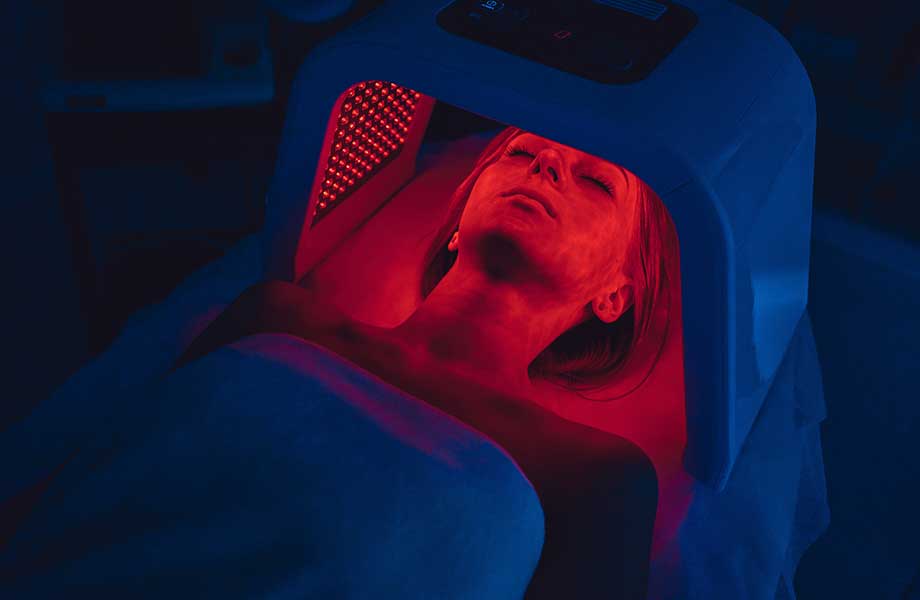
Of course, before using any advanced health hacks, you’ll want to ensure you’re taking care of the fundamentals. Eat a well-balanced and nutritional diet, get plenty of sleep, stay hydrated, and exercise regularly.
If you’re already doing these things, red light therapy may work quite well, depending on your goal. However, you should always consult with your healthcare provider before attempting to treat any medical conditions with at-home treatment.
Does Red Light Therapy Work? FAQs
Does red light treatment actually work?
Yes. Red light therapy can reduce inflammation3, promote healthy skin7, and even accelerate cutaneous wound healing5 when using the correct light frequencies.
What are the negative side effects of red light therapy?
While red light therapy is generally considered safe, staring into red light may cause retinal damage, and eyewear is recommended. Depending on the frequency of light used and the tone of your skin, red light therapy may also cause skin irritation.
Do at-home red light therapy devices work?
Not all home red light therapy devices are created equally, but if they’re able to reach the recommended frequencies to address specific conditions, home devices can be very beneficial with regular use.
References
- NASA research illuminates medical uses of light | NASA spinoff. (n.d.-b). https://spinoff.nasa.gov/NASA-Research-Illuminates-Medical-Uses-of-Light
- Rinnerthaler, M., Bischof, J., Streubel, M. K., Trost, A., & Richter, K. (2015). Oxidative stress in aging human skin. Biomolecules, 5(2), 545–589. https://doi.org/10.3390/biom5020545
- Pahwa, R., Jialal, I., & Goyal, A. (2019, June 4). Chronic Inflammation. NIH.gov; StatPearls Publishing. https://www.ncbi.nlm.nih.gov/books/NBK493173/
- Hamblin M. R. (2017). Mechanisms and applications of the anti-inflammatory effects of photobiomodulation. AIMS biophysics, 4(3), 337–361. https://doi.org/10.3934/biophy.2017.3.337
- Yadav, A., & Gupta, A. (2017). Noninvasive red and near-infrared wavelength-induced photobiomodulation: promoting impaired cutaneous wound healing. Photodermatology, photoimmunology & photomedicine, 33(1), 4–13. https://doi.org/10.1111/phpp.12282
- Huang, A., Nguyen, J., Ho, D., & Jagdeo, J. (2020). Light emitting diode phototherapy for skin aging. Journal of Drugs in Dermatology, 19(4), 359–364. https://doi.org/10.36849/jdd.2020.4711
- Zhang, P., & Wu, M. X. (2017). A clinical review of phototherapy for psoriasis. Lasers in Medical Science, 33(1), 173–180. https://doi.org/10.1007/s10103-017-2360-1
- Glass G. E. (2021). Photobiomodulation: The Clinical Applications of Low-Level Light Therapy. Aesthetic surgery journal, 41(6), 723–738. https://doi.org/10.1093/asj/sjab025
- DE Oliveira, M. F., Johnson, D. S., Demchak, T., Tomazoni, S. S., & Leal-Junior, E. C. (2022). Low-intensity LASER and LED (photobiomodulation therapy) for pain control of the most common musculoskeletal conditions. European journal of physical and rehabilitation medicine, 58(2), 282–289. https://doi.org/10.23736/S1973-9087.21.07236-1
- Ferraresi, C., Huang, Y. Y., & Hamblin, M. R. (2016). Photobiomodulation in human muscle tissue: an advantage in sports performance?. Journal of biophotonics, 9(11-12), 1273–1299. https://doi.org/10.1002/jbio.201600176
- Brouwer, A., Nguyen, H. T., Snoek, F. J., van Raalte, D. H., Beekman, A. T. F., Moll, A. C., & Bremmer, M. A. (2017). Light therapy: is it safe for the eyes?. Acta psychiatrica Scandinavica, 136(6), 534–548. https://doi.org/10.1111/acps.12785
- Can Red Light Therapy Slow Nearsightedness in Children? (2024, April 1). American Academy of Ophthalmology. https://www.aao.org/eye-health/news/red-light-therapy-nearsightedness-myopia-children
- Jagdeo, J., Nguyen, J. K., Ho, D., Wang, E. B., Austin, E., Mamalis, A., Kaur, R., Kraeva, E., Schulman, J. M., Li, C. S., Hwang, S. T., Wun, T., Maverakis, E., & Isseroff, R. R. (2020). Safety of light emitting diode-red light on human skin: Two randomized controlled trials. Journal of biophotonics, 13(3), e201960014. https://doi.org/10.1002/jbio.201960014
- Austin, E., Huang, A., Wang, J. Y., Cohen, M., Heilman, E., Maverakis, E., Michl, J., & Jagdeo, J. (2022). Red Light Phototherapy Using Light-Emitting Diodes Inhibits Melanoma Proliferation and Alters Tumor Microenvironments. Frontiers in oncology, 12, 928484. https://doi.org/10.3389/fonc.2022.928484
Further reading

Our experts provide four jump rope exercises to work into your fitness regimen. Read more

personally tested some of the best ellipticals on the market to determine which could work best for you, based on your needs. While these are often large and expensive machines, they do offer significant benefits for those looking for a low-impact workout at home. Read more

In our Kensui AdjustaBELLS review, we take a look at these nylon adjustable dumbbells and the killer value they bring. Read more

Lateral raises are one of the best isolation exercises to include in your shoulder workout. Check out our guide for trainer tips, variations, and more! Read more

